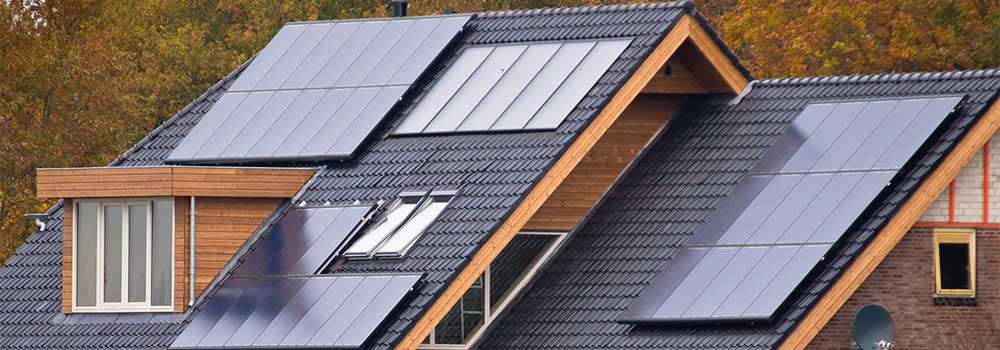Residential Roofing Trends: Innovative Designs & Sustainable Materials
Roofing a home is about more than simply protection; it’s also a chance to be creative and environmentally conscious. The roofing business has seen a surge of innovative developments due to homeowners’ growing concern for the environment and desire for distinctive architectural expression.
This article will discuss some of the most cutting-edge residential roofing trends, including eco-friendly designs and materials. From eco-friendly options to visually striking styles, let’s discover how these trends are reshaping the roofs above our heads. Continue reading the entire content with Journey Builders Inc.
Green Roofs: Embracing Nature’s Canopy
Imagine transforming your roof into a lush, vibrant oasis that brings nature closer to home. Green roofs are an innovative trend that accomplishes just that. By integrating living vegetation into roofing systems, homeowners can create a miniature garden atop their houses. This not only adds visual appeal but also offers a host of environmental benefits.
One of the primary advantages of green roofs is their ability to reduce the urban heat island effect. In densely populated areas, concrete and asphalt absorb heat, leading to elevated temperatures.
Green roofs, on the other hand, act as natural insulators, reducing the heat buildup and creating a cooling effect. This can significantly lower energy consumption, especially during scorching summer months.
Solar Roofing: Harvesting Energy from Above

In the pursuit of sustainable living, harnessing the sun’s energy has become a pivotal trend, and solar roofing is at the forefront of this movement. By seamlessly integrating solar panels into roofing systems, homeowners can generate electricity directly from the abundant sunlight that falls on their roofs.
Solar roofing offers numerous advantages, with energy generation being the most significant one. Solar panels convert sunlight into electricity through photovoltaic cells, providing a clean and renewable source of power. By utilizing solar energy, homeowners can significantly reduce their reliance on traditional energy sources, leading to lower utility bills and a reduced carbon footprint.
Cool Roofs: Reflecting the Heat Away
When the scorching summer sun beats down on your roof, it can turn your home into an oven. But there’s a trend that aims to keep things cool – cool roofs. These roofs are designed to minimize heat absorption and keep homes comfortably cool, even in the hottest weather.
The secret behind cool roofs lies in their highly reflective materials. These roofing systems are constructed using light-colored or reflective surfaces that bounce back a significant portion of the sun’s rays. By reflecting sunlight, cool roofs prevent excessive heat from penetrating the home, reducing the need for air conditioning and ultimately cutting down energy costs.
The benefits of cool roofs extend beyond energy efficiency. By reducing the demand for air conditioning, they alleviate the strain on the electrical grid during peak times, contributing to a more stable and reliable energy supply for everyone. This energy-saving potential is especially valuable in urban areas, where a large concentration of buildings can create heat islands.
Architectural Shingles: Elevating Aesthetics and Durability
Gone are the days when a roof was merely a functional necessity. Today, homeowners seek both functionality and beauty, and architectural shingles provide the perfect combination of the two. These innovative roofing materials are designed to elevate aesthetics while offering exceptional durability and weather resistance.
Architectural shingles come in a variety of shapes, sizes, and textures, allowing homeowners to achieve the desired look for their roofs. They can mimic the appearance of premium materials such as slate, cedar shake, or tile, providing an elegant and sophisticated aesthetic at a fraction of the cost.
In addition to their visual appeal, architectural shingles are renowned for their durability. They are manufactured using multiple layers of asphalt and fiberglass, making them more robust and resistant to harsh weather conditions compared to traditional three-tab shingles. Architectural shingles can withstand strong winds, heavy rain, and hail, ensuring long-lasting protection for homes.
Conclusion
Residential roofing by experts like Journey Builders Inc has evolved beyond its functional role, becoming a canvas for innovative designs and sustainable practices. The trends discussed in this blog post showcase the industry’s commitment to eco-consciousness and aesthetics.
Whether it’s embracing green roofs, harnessing solar energy, opting for cool roofs, exploring architectural shingles, or using recycled materials, homeowners now have a plethora of options to enhance their roofs.
